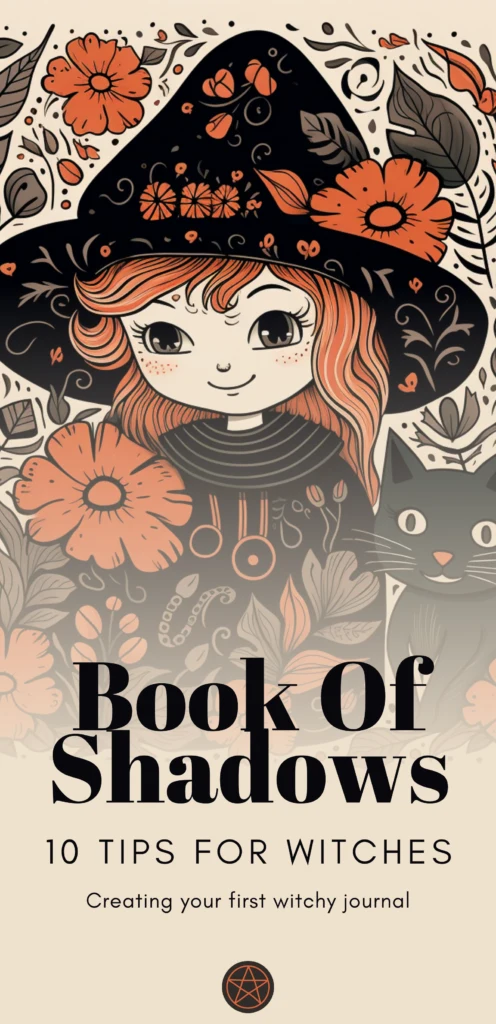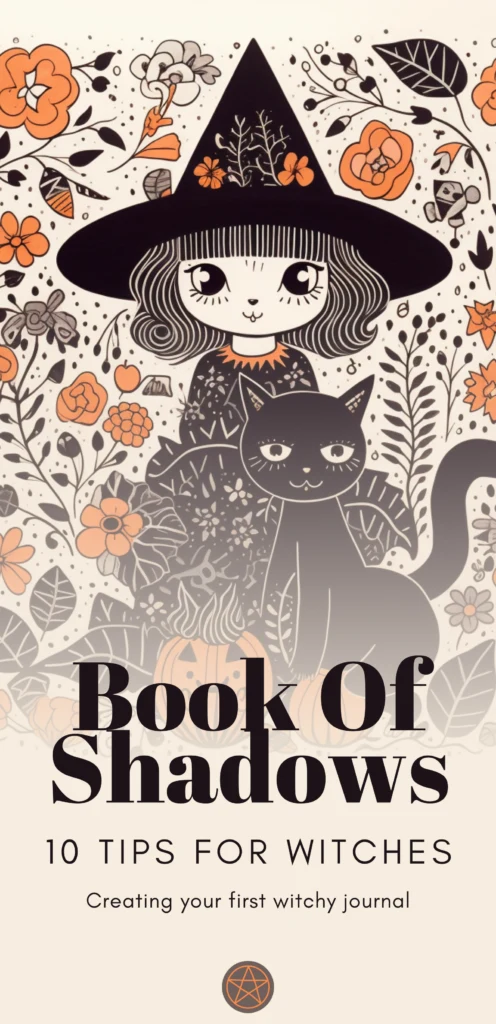Please note that posts on this site may contain affiliate links
A Book of Shadows is an essential tool for any witch. This sacred text contains spells, rituals, magical correspondences, and a record of your magical journey. For beginners, creating your first Book of Shadows can seem daunting. Follow these tips to get started on the right foot.
10 Tips for Creating Your First Book of Shadows
Tip 1: Set Your Intention
The first step in creating your Book of Shadows is to set a clear intention. What do you want to achieve with your magical practice? What kind of energy do you want to attract into your life? Take some time to meditate on these questions, and let your intention arise naturally.
Then, write it down in the front of your Book of Shadows, so that it serves as a reminder and guides your magical practice.
- Additional tips:
- Write down why this intention resonates with you
- List any affirmations that align with your intention
- Include an inspirational quote that motivates you
Tip 2: Choose a Meaningful Name
Your Book of Shadows should have a name that resonates with you and reflects the essence of your magical practice. Take some time to think about what name feels right for you. You might choose a name that reflects your magical tradition, like “The Wiccan Way” or “The Druid’s Guide.”
Alternatively, you might choose a name that reflects the energies you want to work with, like “The Book of Light” or “The Shadow Chronicles.” Whatever name you choose, make sure it feels significant and meaningful to you.
- Additional tips:
- Browse baby name books for inspiration
- Look up myths and folklore for meaningful names
- Combine two words with personal significance

Tip 3: Include Basic Info
Your Book of Shadows should include some basic information about your magical practice. This might include your name, your magical name (if you have one), your astrological sign, and any other details that feel relevant to your practice.
You might also want to include a brief history of your magical journey, including when you started practicing and any significant events or experiences that have shaped your path.
- Additional tips:
- Write a brief bio describing your magical journey
- Make a list of teachers, mentors, or books that influenced you
- Include any major milestones or revelations about your path
Tip 4: Organize the Contents
Organizing your Book of Shadows is crucial, so that you can easily find the information you need. You might consider organizing your Book of Shadows alphabetically, with sections for different types of spells, rituals, and magical techniques.
Alternatively, you might organize it thematically, with sections for love, prosperity, protection, and so on. Find a system that works for you, and stick to it.
- Additional tips:
- Create a table of contents and index for quick lookups
- Use dividers or tabs between sections
- Leave space to add future material
Tip 5: Personalize with Art
Your Book of Shadows should be a reflection of your personality and style. Consider adding personal touches, like illustrations, photographs, or poems that inspire you.
You might also want to include quotes or passages that resonate with you, or even clippings from magazines or books that speak to your magical practice. Don’t be afraid to get creative and add whatever feels meaningful to you.
- Additional tips:
- Draw or paint representations of your intention, deities, symbols
- Add magazine clippings or printouts relating to your practice
- Use calligraphy, colored pens and highlights to customize

Tip 6: Include Divination Tools
Divination tools, like tarot cards, runes, or scrying mirrors, can be incredibly useful in your magical practice. Consider incorporating them into your Book of Shadows, so that you can easily reference them when you need guidance or insight.
You might create a section for divination, where you record your readings and interpretations. Alternatively, you might include divination tools in your daily or weekly rituals, using them to connect with the divine and gain clarity about your path forward.
- Additional tips:
- Make pockets or pouches to hold smaller tools
- Record card meanings, spreads, and sample readings
- Note interpretations of dreams, omens, and messages
Tip 7: Track Dreams and Omens
Dreams and synchronicities can be powerful sources of guidance and inspiration in your magical practice. Consider recording them in your Book of Shadows, so that you can revisit them later and glean insights into your subconscious mind.
You might keep a dream journal, where you record your nighttime visions and interpret their symbolism. Alternatively, you might jot down synchronicities throughout your day, noting patterns and connections that emerge in your life.
- Additional tips:
- Use a dream journal section to record nightly visions
- Note any déjà vu moments, coincidences, or premonitions
- Interpret signs; analyze patterns and recurring themes
Tip 8: Record Spells and Rituals
Keeping track of your spells and rituals is essential, so that you can see what’s working and what isn’t. Consider creating a section in your Book of Shadows for spellcasting, where you record the details of each spell you cast.
You might note the date, time, moon phase, and any other relevant factors, along with the outcome of the spell. This will help you refine your technique and identify patterns in your magical practice.
- Additional tips:
- Note astrological events like moon phases and planetary positions
- Diagram altar layouts, tools used, and directions faced
- Document sensations, visualizations, chanting, energies raised
Tip 9: Practice Regularly
Consistent practice is key to developing your magical skills and deepening your connection to the divine. Consider setting aside time each day or week to practice, whether it’s meditation, chanting, or casting spells.
Make sure to record your practice sessions in your Book of Shadows, noting what you did and how it felt. Over time, you’ll start to notice changes in yourself and your life, as your magical practice takes root and grows.
- Additional tips:
- Set reminders to use the book of shadows frequently
- Note favorite techniques to integrate into regular rituals
- Observe growth in skills, awareness, intuition over time

Tip 10: Follow Your Intuition
Finally, remember to trust your intuition in your magical practice. Your intuition is a powerful guide, capable of leading you toward your highest potential and greatest joy. Don’t be afraid to follow your gut instincts, even if they seem counterintuitive or outside the bounds of traditional magic.
Remember, magic is a highly personal practice, and what works for someone else may not work for you. Trust in yourself and your abilities, and you’ll find success and fulfillment on your magical journey.
- Additional tips:
- Pay attention to inner nudges on how to proceed
- Let the book evolve as you grow on your path
- Trust your instincts when adding new material
Creating your first book of shadows marks an exciting milestone on your witchcraft journey. With these beginner tips, you’ll have the perfect foundation to build a deeply personal and powerful grimoire to elevate your practice. Blessed be!
Unveil the power of the celestial bodies and explore a side of witchcraft often misunderstood and underused. "Creating Moon Water During the Waning Moon: Healing and Purification" is an all-inclusive guide that will transform your magical practice and daily life.


